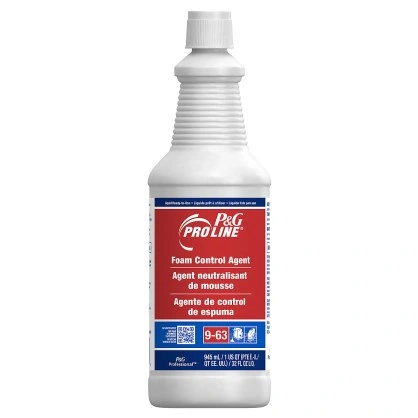Typical Challenges in Foam Control and Exactly How to Conquer Them Efficiently
Typical Challenges in Foam Control and Exactly How to Conquer Them Efficiently
Blog Article
A Comprehensive Overview to Carrying Out Foam Control Solutions in Your Procedures
Efficient foam control is an essential facet of operational efficiency that commonly goes overlooked. Understanding the complexities of foam generation can substantially influence both performance and item top quality. By analyzing vital elements such as application compatibility and employees training, organizations can enhance their foam monitoring initiatives.
Recognizing Foam Difficulties
Foam challenges are a significant concern throughout different industries, influencing functional efficiency and item high quality. The formation of too much foam can impede procedures such as blending, transportation, and storage space, resulting in increased downtime and waste. In fields like food and drink, drugs, and petrochemicals, foam can disrupt manufacturing lines, causing item variances and contamination risks.
In addition, foam can obstruct tools performance, leading to expensive repairs and maintenance. For example, in wastewater treatment, foam can interfere with clarifier operations, causing lower therapy effectiveness and regulatory conformity problems.
Recognizing the underlying sources of foam generation is vital for effective administration. Elements such as surfactants, temperature variations, and agitation degrees can all add to foam manufacturing. Identifying these components enables industries to implement targeted strategies that reduce foam development while keeping product integrity.
Kinds Of Foam Control Solutions

Mechanical services involve the usage of devices such as foam skimmers or defoamers. Chemical services, on the various other hand, consist of the application of defoaming agents-- materials that interfere with the foam structure, leading to its collapse. Foam Control.
Lastly, functional approaches concentrate on process modifications. This may entail customizing equipment specifications, such as temperature and pressure, or altering the circulation rates of liquids to decrease foam generation. Moreover, carrying out good housekeeping techniques can likewise alleviate foam development by decreasing contaminants that contribute to foam security.
Picking the ideal foam control option entails examining the certain needs of the operation, consisting of the kind of procedure, the qualities of the materials entailed, and safety factors to consider.
Selecting the Right Products
Choosing the right foam control products requires a thorough understanding of the details application and its one-of-a-kind obstacles. Variables such as the type of foam, the setting in which it takes place, and the wanted end result all play critical duties in product option. Foam Control. In sectors like food handling, it is vital to choose food-grade defoamers that abide with safety and security regulations while successfully managing foam.
In addition, consider the viscosity of the fluid where the foam issue exists. Some items are created for low-viscosity applications, while others are tailored for thicker fluids. Compatibility with existing procedures is an additional essential facet; the chosen foam control representatives must integrate effortlessly without disrupting overall operations.
An additional important variable is the approach of application. Some items may require dilution, while others can be used directly. Evaluating the ease of use and the called for dosage can offer understandings into the product's efficiency and cost-effectiveness.
Implementation Approaches
Effective implementation approaches for foam control services need a methodical method that lines up item selection with functional demands. The very first step includes a comprehensive analysis of the procedures where foam happens, determining particular locations that require intervention. By involving cross-functional groups, consisting of high quality, engineering, and production guarantee, companies can collect understandings that inform the choice of one of the most effective foam control items.
Next, it is vital to establish clear purposes for foam reduction, making certain that these goals are possible and measurable. This might involve defining appropriate foam levels and the timelines for implementation. Educating workers on basics the buildings and application methods of picked foam control agents is similarly vital, as correct use is vital for optimum outcomes.
In addition, integrating foam control remedies into existing workflows needs careful planning. Ultimately, a well-structured approach will certainly improve functional effectiveness while effectively taking care of foam-related challenges.
Monitoring and Examining Performance
Surveillance and evaluating the effectiveness of foam control options is crucial for guaranteeing that carried out methods generate the wanted outcomes. This process involves systematic data collection and analysis to evaluate the performance of foam control agents and techniques. Secret performance indicators (KPIs) must be developed before application, permitting a clear standard versus which to Learn More determine development.

Assessing efficiency likewise needs regular evaluations of foam control treatments and representative efficiency. This can be completed via tasting and screening, enabling operators to identify if present services are meeting operational needs. Furthermore, it is essential to solicit feedback from group participants that engage with these systems daily, as their insights can reveal operational subtleties that quantitative data might neglect.

Inevitably, a structured tracking and analysis framework assists recognize needed adjustments, ensuring that foam control solutions continue to be efficient, inexpensive, and lined up with organizational goals.
Final Thought
In verdict, efficient foam control solutions are crucial for optimizing functional efficiency and preserving item high quality. A thorough understanding of foam difficulties, incorporated with the selection of ideal items and implementation methods, facilitates the successful monitoring of foam generation.
Implementing great housekeeping methods can additionally reduce foam development by reducing contaminants that add to foam security.
Selecting the right foam control products needs a detailed understanding of the specific view it application and its special obstacles (Foam Control).Successful execution strategies for foam control services need an organized strategy that aligns item option with operational needs.In final thought, efficient foam control options are crucial for maximizing operational effectiveness and keeping product top quality. An extensive understanding of foam challenges, incorporated with the choice of proper items and application approaches, assists in the effective monitoring of foam generation
Report this page